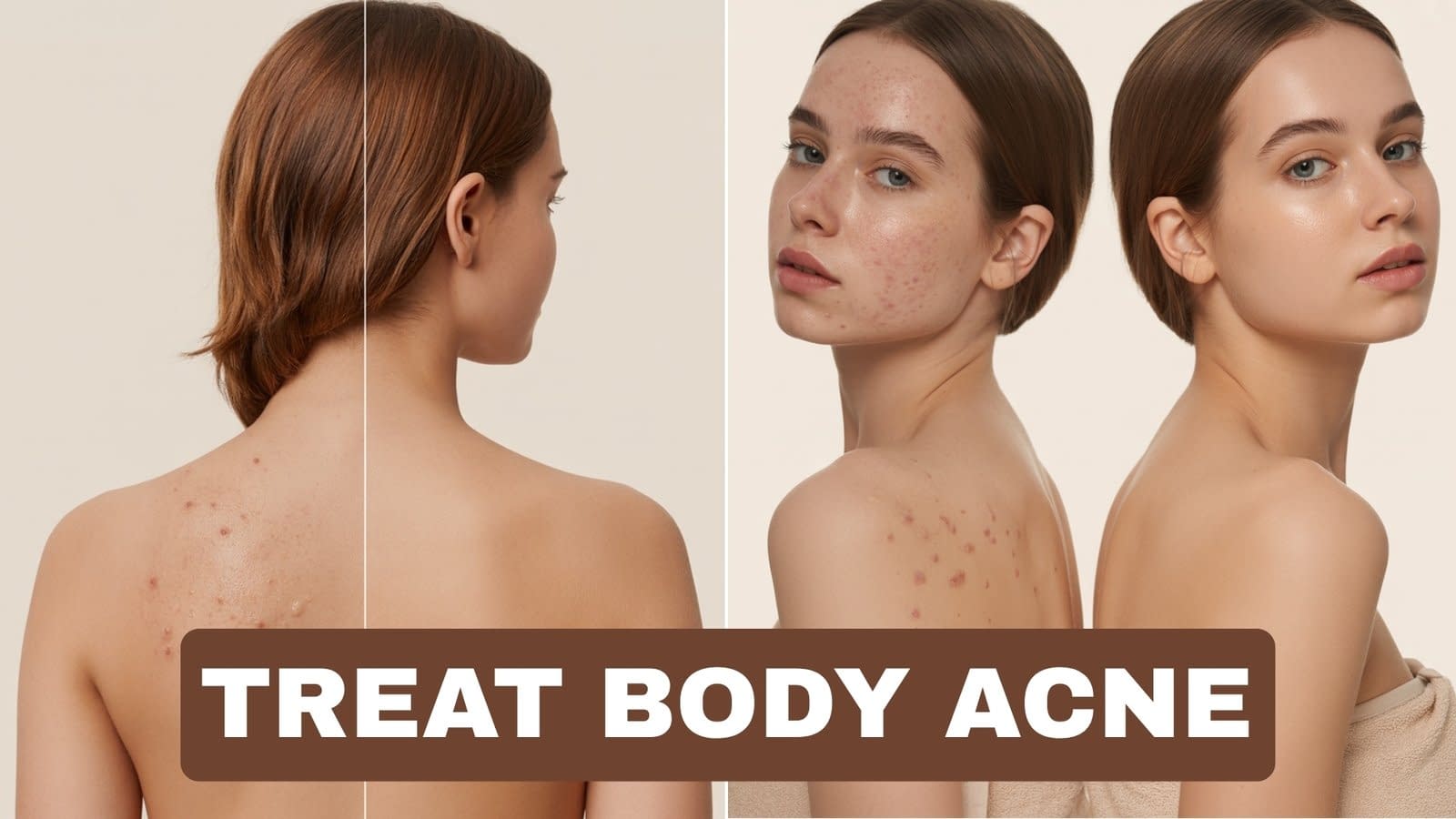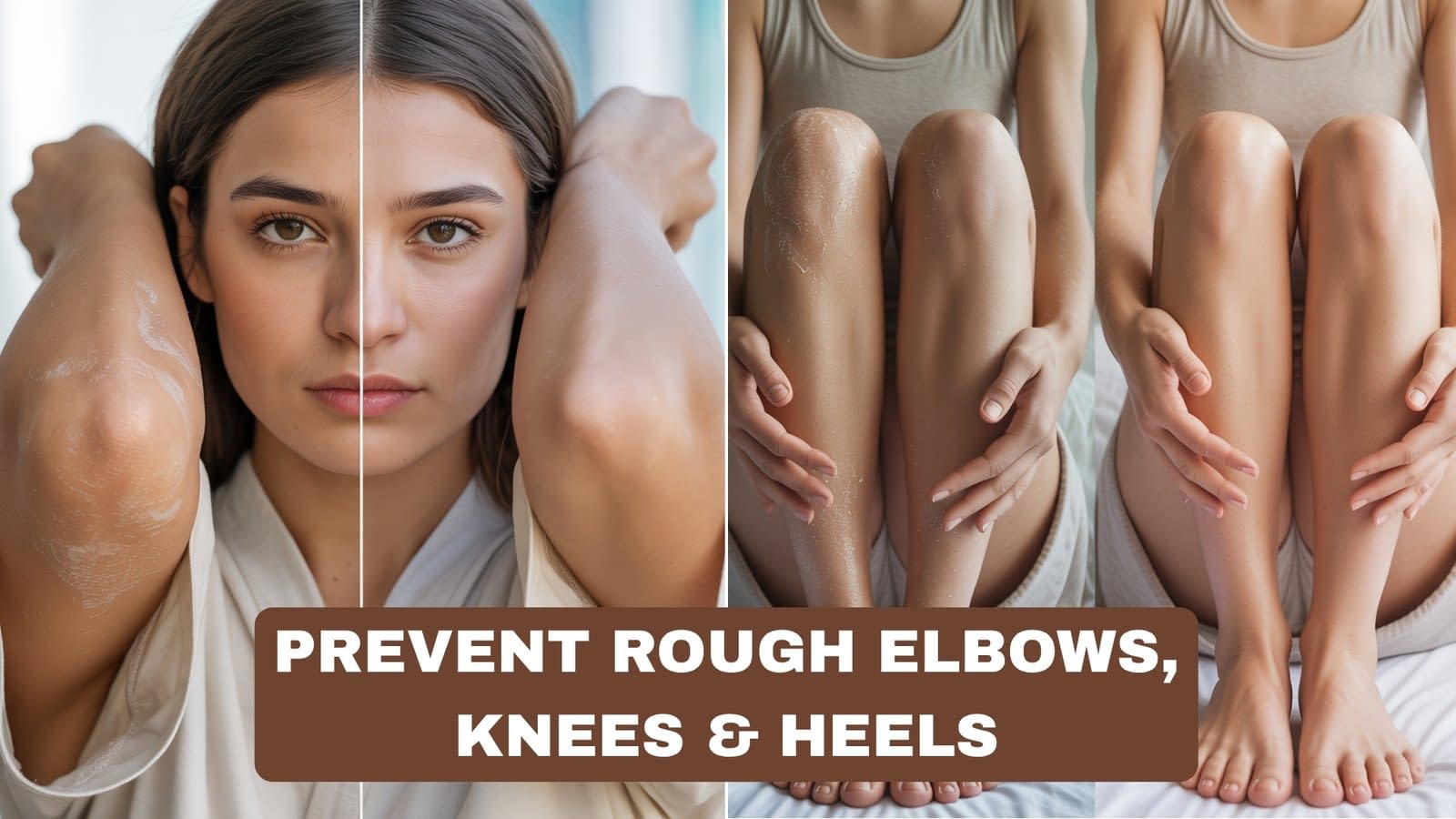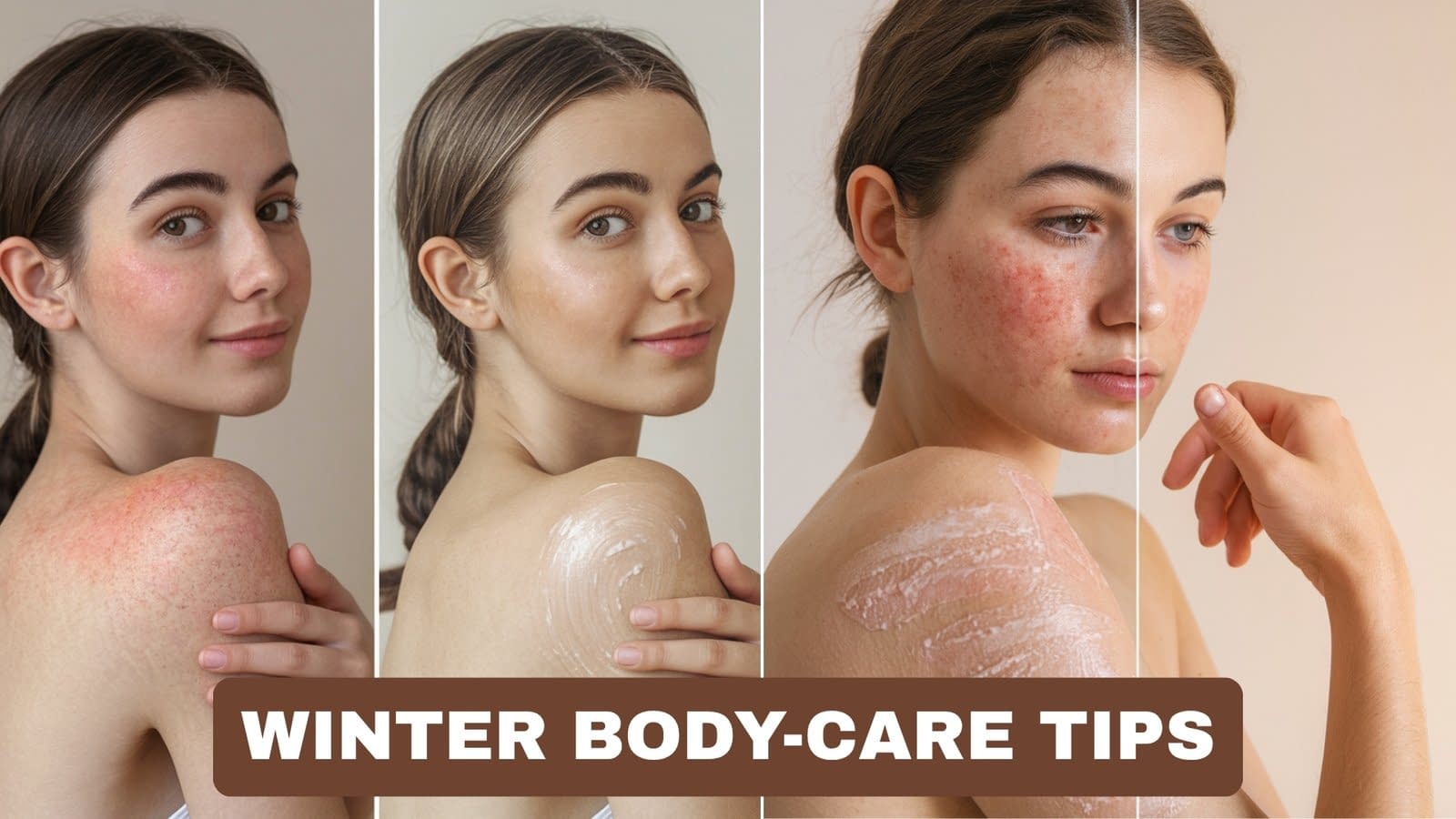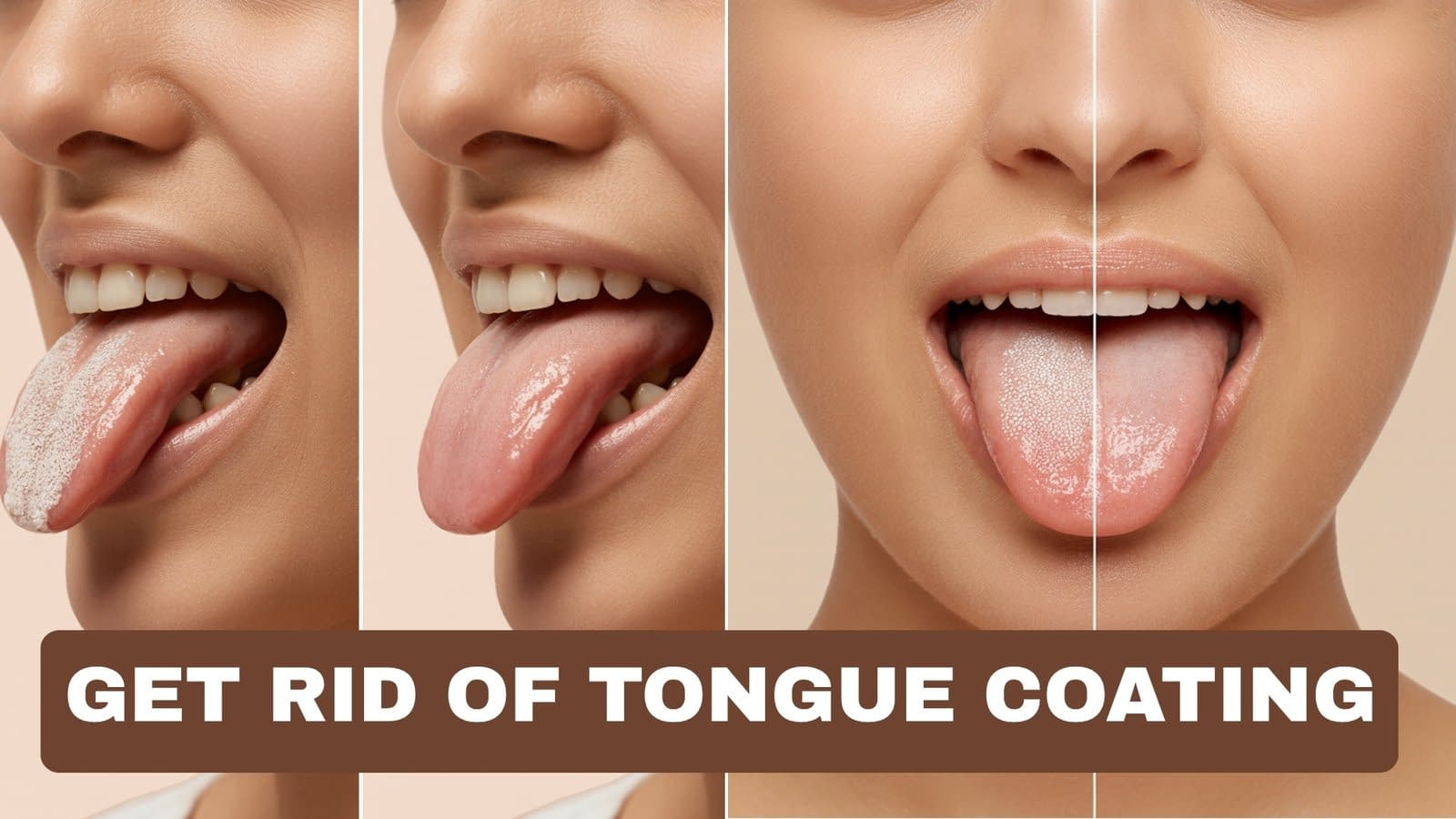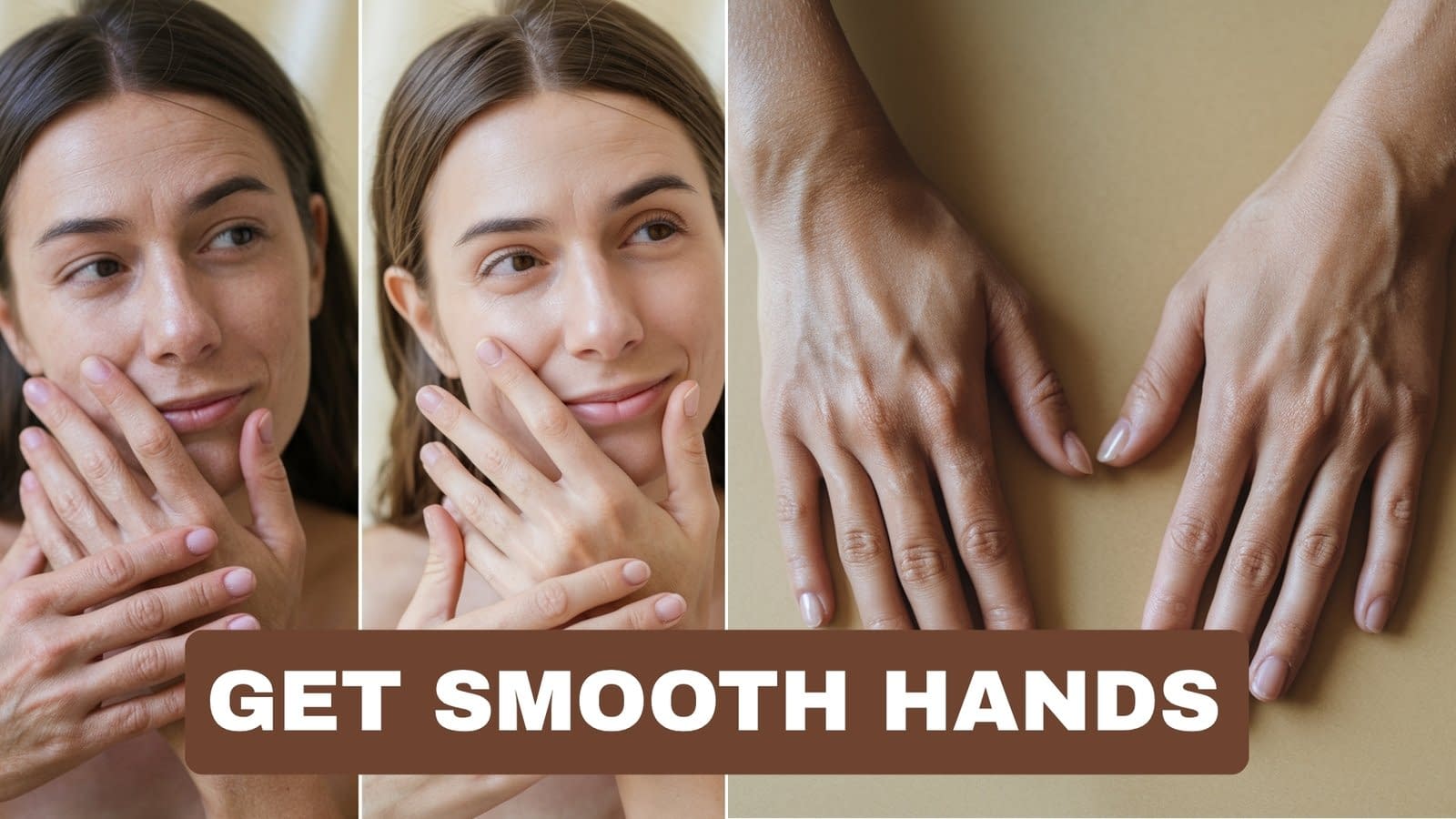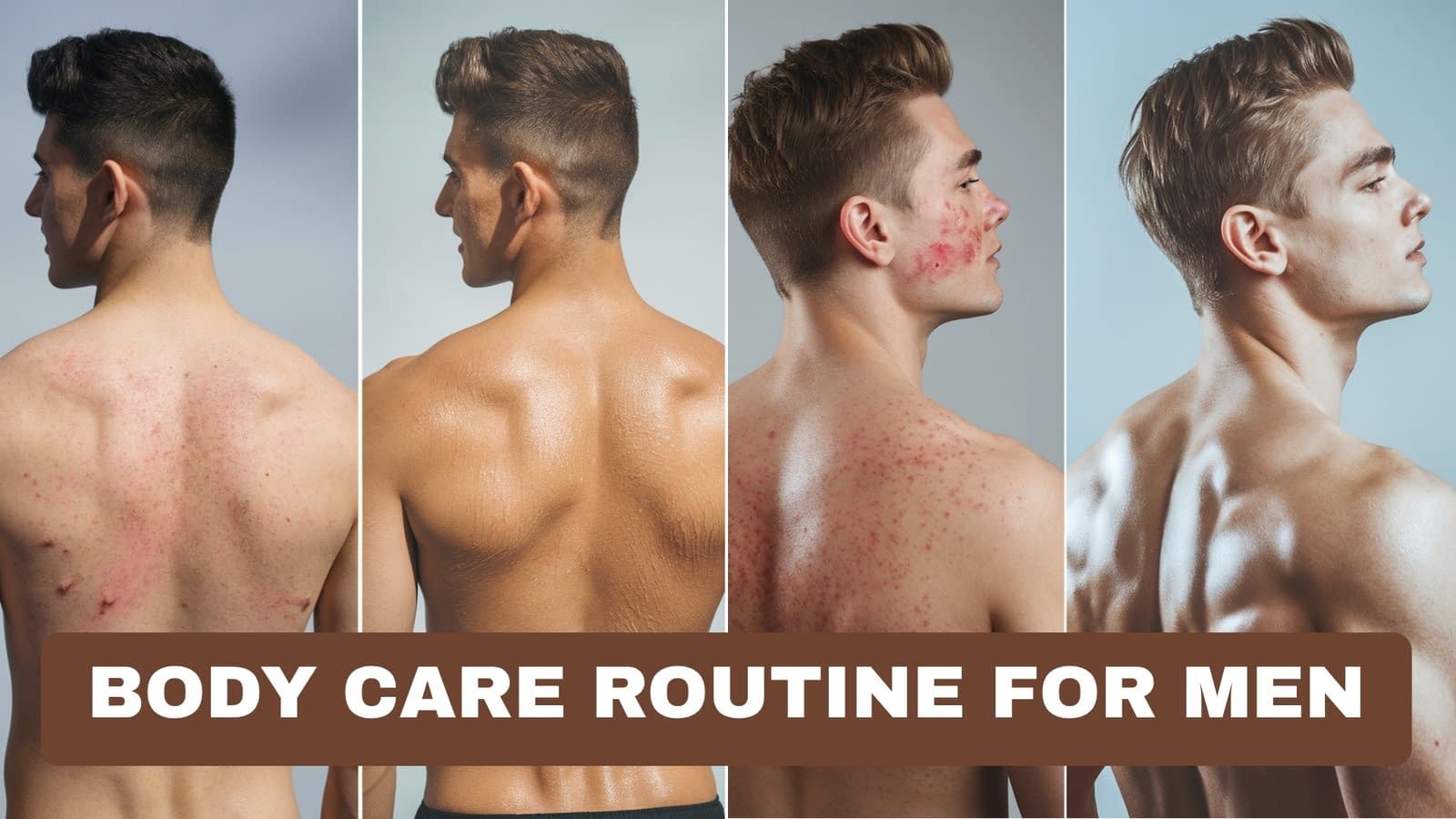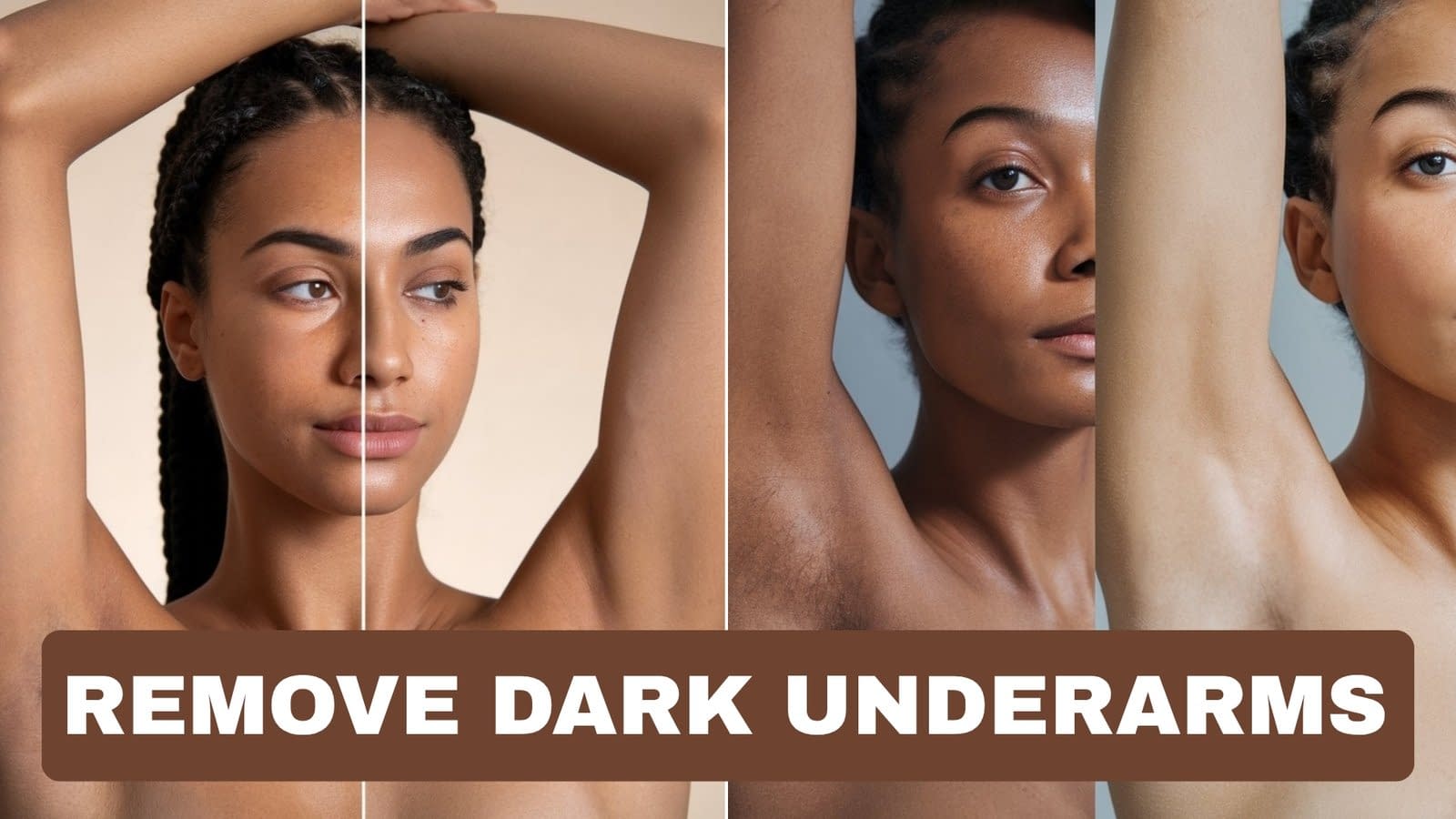Body acne — the pimples, bumps, and cysts that show up on your back, chest, shoulders, and sometimes arms — is painfully common and treatable. This guide gives you a clear, practical plan: what body acne is, why it happens, how to prevent and treat it at home, which dermatologist-recommended options exist for stubborn cases, and exactly what to do step-by-step for showering, skincare, diet, and scar prevention. Read it like a toolbox: pick the steps that fit your skin, be consistent, and see a dermatologist when things won’t budge.
What Is Body Acne? (Backne, Chest Acne & Shoulder Breakouts Explained)
Body acne is the same basic process as facial acne — follicle clogging, inflammation, bacteria, and sometimes deeper nodules — but it appears on larger, oilier skin areas like the back, chest, and shoulders:
- Comedonal acne: closed (whiteheads) and open (blackheads) comedones.
- Inflammatory acne: red papules and pustules (the typical “pimple”).
- Nodulocystic acne: deeper, tender nodules or cysts that can scar.
On the back, you’ll often see more widespread eruptions because there are many sebaceous (oil) glands and friction from clothing. “Backne” is a helpful nickname for this area-specific pattern. The same processes (blocked pores + Propionibacterium/acnes bacteria + inflammation) underlie most lesions. When acne is widespread or painful, it’s more likely to need medical therapy. (Basic treatment guidance later.) American Academy of Dermatology+1
What Causes Body Acne? Common Triggers You Should Know
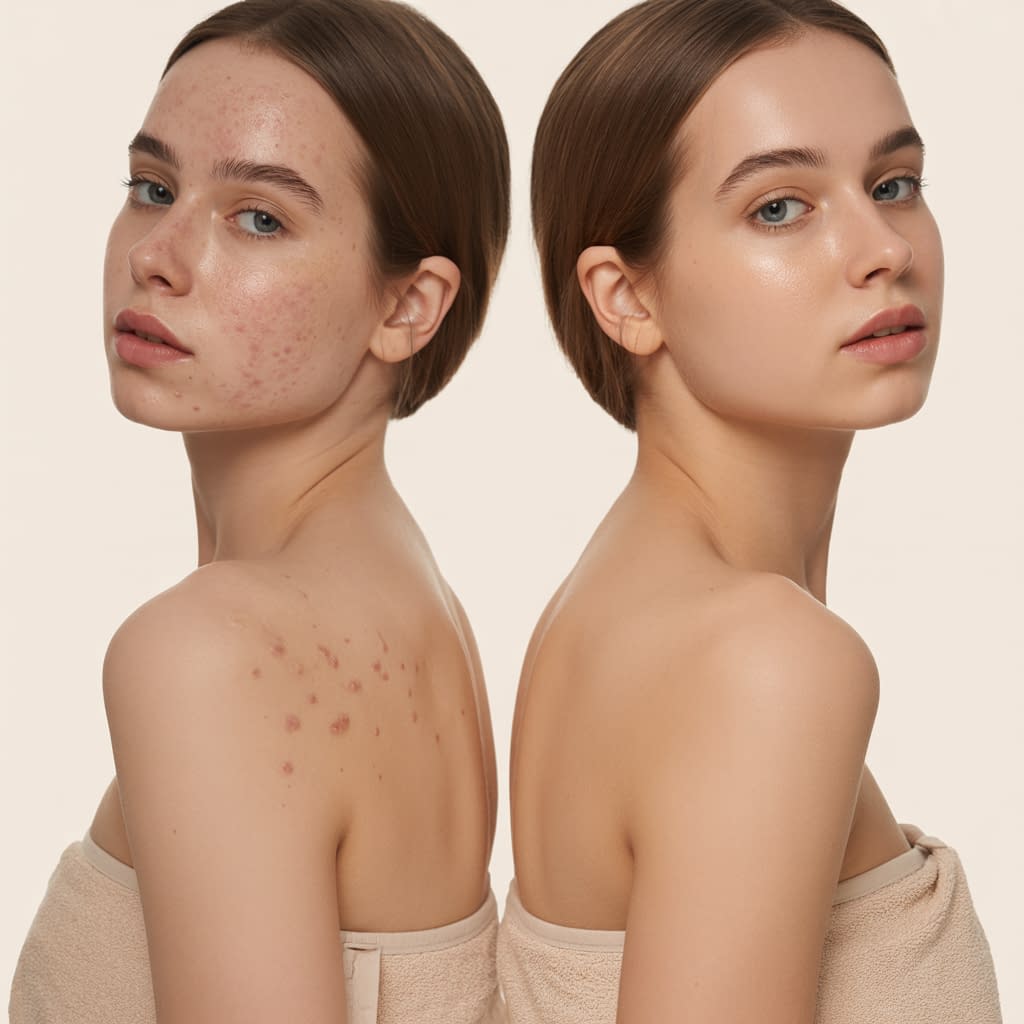
Body acne often stems from one or more of these triggers:
- Excess oil (sebum) production: big driver of clogged follicles.
- Dead skin and buildup: insufficient cleansing after sweating or using heavy body products.
- Friction / pressure (acne mechanica): tight clothes, backpacks, sports gear, straps rubbing the skin cause irritation and comedones.
- Sweat + trapped moisture: sweat left on skin creates a breeding ground for bacteria and increases follicular occlusion.
- Hair removal trauma: shaving, waxing, or epilation that irritates follicles can trigger inflammation and ingrown hairs.
- Occlusive or comedogenic products: heavy lotions, sunscreens, or body oils can block pores.
- Hormonal influence: androgens raise sebum production (typical in teens or with hormonal fluctuations).
- Medications or supplements: certain drugs (some steroids, lithium) can worsen acne.
- Diet and lifestyle: emerging evidence links high-glycemic diets and dairy with acne severity in some people (more below). American Academy of Dermatology+1
Tip: body acne frequently has multiple causes — addressing several triggers at once (cleaning, clothing, products, and topical meds) gives the best results.
Is Body Acne Normal? When to Be Concerned
Short answer: yes — mild to moderate body acne is common and usually manageable. Be more concerned and seek medical advice if any of the following apply:
- lesions are large, painful, or cystic (risk of scarring)
- acne is widespread and not improving after consistent OTC care for 6–8 weeks
- rapid onset of new nodules or lesions, or pimples that bleed or drain repeatedly
- the acne is accompanied by other symptoms (weight change, excessive hair growth, irregular periods) that might suggest hormonal issues
- you’ve tried many OTC options and things worsen or you have signs of infection (fever, spreading redness)
If you’re in any of those categories, a dermatologist can help you avoid scarring and pick the most effective treatments. Mayo Clinic
Best Daily Skincare Routine for Clearer Body Skin — Step-by-Step
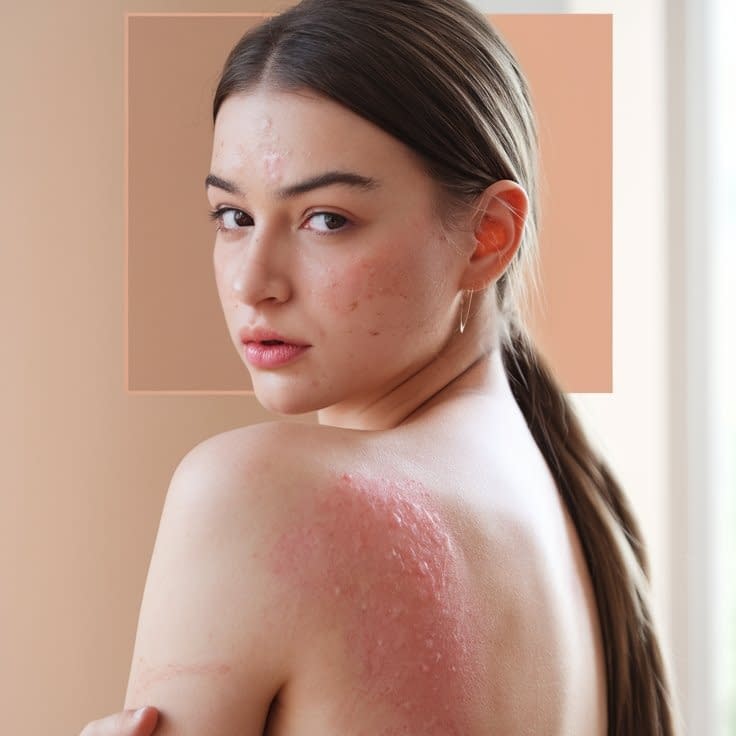
A consistent daily routine removes sweat/oil, prevents buildup, and lets treatments work. Here’s a practical AM / PM plan you can start immediately.
Morning — quick, protective
- Rinse or gentle shower (if you sweat at night): Lukewarm water. Avoid hot water (strips barrier).
- Cleanse: Use a gentle non-comedogenic body wash (avoid heavy oils). If you use a medicated wash (benzoyl peroxide, salicylic acid), use as directed 1× daily to start.
- Dry thoroughly: Pat dry; moisture trapped in folds encourages bacteria.
- Treat (optional): If you use a leave-on product (e.g., topical benzoyl peroxide or a light salicylic spray), apply to clean, dry skin to problem areas.
- Dress wisely: Wear breathable fabrics (cotton, moisture-wicking sportswear) if you’ll be active.
Evening — clean & treat
- Shower after sweat: Always shower after workouts or heavy sweating (within 30–60 minutes if possible). Cleansing reduces pore-clogging residues. Mayo Clinic News Network+1
- Double-check hard-to-reach areas: Use a soft brush or long-handled sponge if you need help reaching the middle back — but avoid rough scrubbing (it irritates).
- Topical treatment: On fully dry skin, apply your acne medication: benzoyl peroxide for inflammation/bacteria; salicylic acid for comedones and exfoliation; or topical retinoids (adapalene) for cell turnover. Start slowly to let skin adapt. Mayo Clinic+1
- Moisturize if needed: If treatments dry your skin, use a non-comedogenic body moisturizer (fragrance-free).
- Laundry: Put on a clean shirt after showering — oils and bacteria on clothing exacerbate acne.
Key routine tips
- Do not scrub hard — gentle is better. Use medicated washes 2–3× weekly to start and increase frequency if tolerated. Niacinamide products for body use can reduce inflammation (if product is labeled for body application). American Academy of Dermatology
Effective Home Remedies for Treating Body Acne Naturally
Natural measures can help mild cases when used consistently. Patch-test everything and stop if irritation occurs.
Safe, practical home remedies
- Salicylic acid (BHA) leave-on sprays/gels: Often OTC body sprays with 1–2% salicylic acid reduce comedones. Use as directed (1–2× daily).
- Benzoyl peroxide washes or leave-ons: 2.5–5% benzoyl peroxide body washes or washes left on briefly can reduce bacteria — note it can bleach fabrics.
- Tea tree oil (diluted): 5% tea tree oil solutions can reduce inflammation; dilute and patch test.
- AHA body lotions (lactic or glycolic): help with mild exfoliation and texture improvement (use 1–3× weekly to start).
- Warm compresses for tender lesions: apply a warm, clean compress for 10 minutes to ease discomfort and promote drainage of a pustule (do not squeeze).
- Avoid home squeezing/popping: increases risk of scarring and secondary infection.
How to apply a typical home protocol (step-by-step):
- Shower after sweating with a gentle salicylic or benzoyl peroxide wash (leave on 30–60 seconds). Rinse.
- Pat dry and allow skin to fully air-dry for a minute.
- Apply a thin layer of benzoyl peroxide gel to active lesions (alternate days if you’re sensitive).
- On non-treated days, use a light AHA body lotion at night (2× weekly) to help unclog pores and smooth texture.
- Wear clean, loose clothing; change sweaty clothes promptly. Mayo Clinic+1
Dermatologist-Recommended Treatments for Stubborn Body Acne
If OTC and home steps don’t clear things within 6–8 weeks, dermatologists often escalate to prescription or in-office therapies:
Topical prescriptions
- Topical retinoids (adapalene, tretinoin): normalize follicular turnover and reduce comedo formation. Adapalene 0.1% is available OTC for face and is often used off-label for body; prescription strengths and formulations are available for body use.
- Topical antibiotics (clindamycin) in combination: usually combined with benzoyl peroxide to prevent resistance.
- Azelaic acid: reduces inflammation and hyperpigmentation and is helpful for some body lesions. American Academy of Dermatology+1
Oral medications (for moderate-severe or refractory cases)
- Oral antibiotics (doxycycline, minocycline) for anti-inflammatory and antibacterial effect short-term (usually <3 months).
- Hormonal therapy (combined oral contraceptives, spironolactone) for hormonally driven acne in people with menstrual cycle correlation.
- Isotretinoin (Accutane): for severe, nodulocystic acne or acne that scars — highly effective but requires specialist supervision and monitoring for side effects. American Academy of Dermatology+1
Procedural options
- Chemical peels (glycolic/lactic/BHA): can reduce comedones and PIH on body skin when used by professionals.
- Light/laser therapies: some lasers and photodynamic therapy reduce acne and scarring, often as adjuncts.
- Extraction & intralesional steroid injections: dermatologists can drain large nodules or inject steroids into cysts to reduce pain and inflammation quickly.
Important: prescription options have trade-offs; discuss risks (antibiotic resistance, teratogenicity for isotretinoin, photosensitivity) with a dermatologist. American Academy of Dermatology+1
Best Ingredients for Fighting Body Acne (What Really Works)

These ingredients have the best evidence for body acne:
- Benzoyl peroxide (2.5–10%) — antibacterial and anti-inflammatory; reduces P. acnes and lesions. (Can bleach fabric.) Mayo Clinic
- Salicylic acid (0.5–2%) — penetrates follicle, dissolves sebum and dead cells (BHA). Good for body washes/sprays. American Academy of Dermatology
- Topical retinoids (adapalene, tretinoin) — normalize cell turnover, prevent new comedones. American Academy of Dermatology
- Azelaic acid — anti-inflammatory, reduces pigmentation; useful for combined acne/PIH. Verywell Health
- Alpha hydroxy acids (glycolic, lactic) — chemical exfoliation to smooth skin and help unclog follicles.
- Tea tree oil (diluted) — modest evidence for mild to moderate acne if used properly and not over-diluted.
How to combine safely (step-by-step):
- Start with one active at a time (e.g., salicylic wash nightly) for 2–4 weeks.
- Add benzoyl peroxide as spot or thin layer if inflammation persists. Monitor dryness/irritation.
- Use topical retinoid at night (adapalene) 2–3× weekly to start, then increase frequency as tolerated.
- Use AHA products on separate nights or in rotation to avoid over-exfoliation.
- If using multiple actives and irritation appears, reduce frequency or stop and consult a dermatologist. Mayo Clinic+1
Shower Habits That Prevent Body Breakouts
Shower technique and timing matter more than you’d think.
Do this (step-by-step):
- Shower promptly after sweating — ideally within 30–60 minutes post-workout to remove sweat/oil. Men’s Health+1
- Use lukewarm water and a gentle cleanser: Avoid hot water and harsh soaps that strip the barrier. Non-comedogenic medicated washes (benzoyl peroxide or salicylic acid) can be rotated into your routine. American Academy of Dermatology
- Avoid vigorous scrubbing or rough loofahs: these cause microtrauma and can worsen acne; use your hands or a very soft cloth instead. Right as Rain by UW Medicine
- Pat dry and let skin air for a minute before dressing: moisture trapped against clothing promotes folliculitis.
- Change sweaty clothes promptly and wash workout gear after each use.
- Avoid heavy oil-based body products on acne-prone zones — if you need moisture, use light, gel or lotion formulas labeled non-comedogenic.
Extra: If you can’t shower right away post-workout, gently rinse affected areas with water and blot dry, or use skin-friendly cleansing wipes as a temporary measure.
Diet and Lifestyle Changes to Reduce Body Acne

Diet doesn’t cause acne for everyone, but some dietary choices can make breakouts worse for susceptible people. Evidence suggests:
- High glycemic load diets (sugary foods, refined carbs) can exacerbate acne by altering hormones like insulin/IGF-1. Reducing high-GI foods has improved acne in some studies. PMC
- Dairy has been associated with acne exacerbation in some studies, especially skim milk; evidence is mixed but worth testing by elimination if you suspect a link. PMC
- Omega-3 rich foods and antioxidants (fish, nuts, vegetables) help reduce inflammation and support skin health. MDPI
Lifestyle steps (practical)
- Stay hydrated and eat a balanced diet focused on whole foods.
- Limit high-GI foods & excessive dairy for 4–8 weeks to test effect (monitor with photos).
- Manage stress — stress promotes inflammation and acne flares; try sleep hygiene, exercise, and mindfulness.
- Keep moving — regular exercise helps hormones and circulation, but shower afterward.
- Avoid picking at bumps — picking increases scarring and PIH.
Dietary changes won’t clear acne overnight, but combined with topical care they can improve outcomes over months. PMC+1
How to Prevent Body Acne Scars and Dark Spots
Scarring and post-inflammatory hyperpigmentation (PIH) are the most frustrating long-term results. Prevent them by preventing the aggravation that causes deep inflammation and by treating early.
Steps to prevent scarring (step-by-step)
- Treat inflamed lesions early: apply anti-inflammatory topical agents (benzoyl peroxide, topical antibiotics or retinoids) rather than squeezing. American Academy of Dermatology
- Avoid picking or popping: increase scarring risk.
- Use sunscreen if chest/back is exposed: UV worsens PIH and dark spots — a 30+ SPF on exposed skin prevents worsening.
- Consider early professional intervention for nodules: intralesional steroid injections can flatten inflamed cysts quickly and reduce scarring.
- After acne clears, treat PIH: topical azelaic acid, glycolic acid peels, or professional chemical peels and targeted laser/light therapies (with caution in darker skin types) can fade dark spots. Work with a dermatologist for pigmentation issues. Verywell Health+1
Note: Some procedures (peels, lasers) require trained professionals and carry PIH risk in darker skin — always seek a dermatologist experienced with your skin tone.
When to See a Dermatologist (Warning Signs)
Make an appointment if you have any of the following:
- Severe, cystic, or nodular acne that is painful or deep.
- Rapidly spreading lesions or recurrent infections.
- Scarring or PIH in progress — early dermatologic management reduces permanent marks.
- No improvement after 6–8 weeks of consistent OTC treatment.
- Possible hormonal signals (adult-onset acne with irregular cycles, hirsutism) — evaluation may reveal underlying endocrine issues.
- You’re considering systemic therapies (oral antibiotics, hormonal therapy, isotretinoin) — these require medical supervision.
A dermatologist can prescribe stronger topical agents, oral meds, and perform in-office procedures to control acne and protect your skin from long-term damage. American Academy of Dermatology+1
Frequently Asked Questions About Body Acne
Q: Can body acne be cured?
A: Many people achieve long-term control or remission with the right combination of topical treatments, lifestyle changes, and, when needed, medical therapy. Severe cases may require ongoing maintenance or systemic therapy.
Q: How long until my body acne improves with treatment?
A: Expect to see early improvement in 4–8 weeks with consistent topical therapy; more stubborn or nodulocystic acne can take months and may need prescription care. Mayo Clinic
Q: Is body acne different from face acne?
A: Mechanistically similar, but body areas often have thicker skin, more sebaceous glands, and more friction. This influences treatment choice and product formulation.
Q: Will changing my laundry detergent help?
A: If you’re sensitive to fragrances or additives, switching to a hypoallergenic, fragrance-free detergent may reduce irritation. Also, wash sweaty clothes promptly.
Q: Are natural remedies enough?
A: For mild cases, topical OTC actives and lifestyle changes can be enough. For moderate to severe acne, combine OTC care with dermatologist guidance — do not rely solely on home remedies for nodulocystic disease.
Final Words
Body acne is common and fixable. Start with a focused plan:
- Simplify your routine: gentle cleansing after sweat, avoid harsh scrubbing, and use breathable clothing. Right as Rain by UW Medicine+1
- Treat actively: use evidence-based OTC ingredients (benzoyl peroxide, salicylic acid, adapalene) applied consistently and gently. Mayo Clinic+1
- Modify lifestyle: tweak diet (reduce high-GI foods/dairy if you suspect a link), manage stress, and shower after workouts. PMC+1
- Escalate when needed: consult a dermatologist for prescription topicals, oral meds, or procedures if acne is moderate, severe, or scar-forming.


